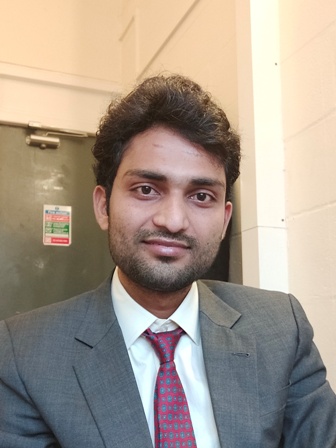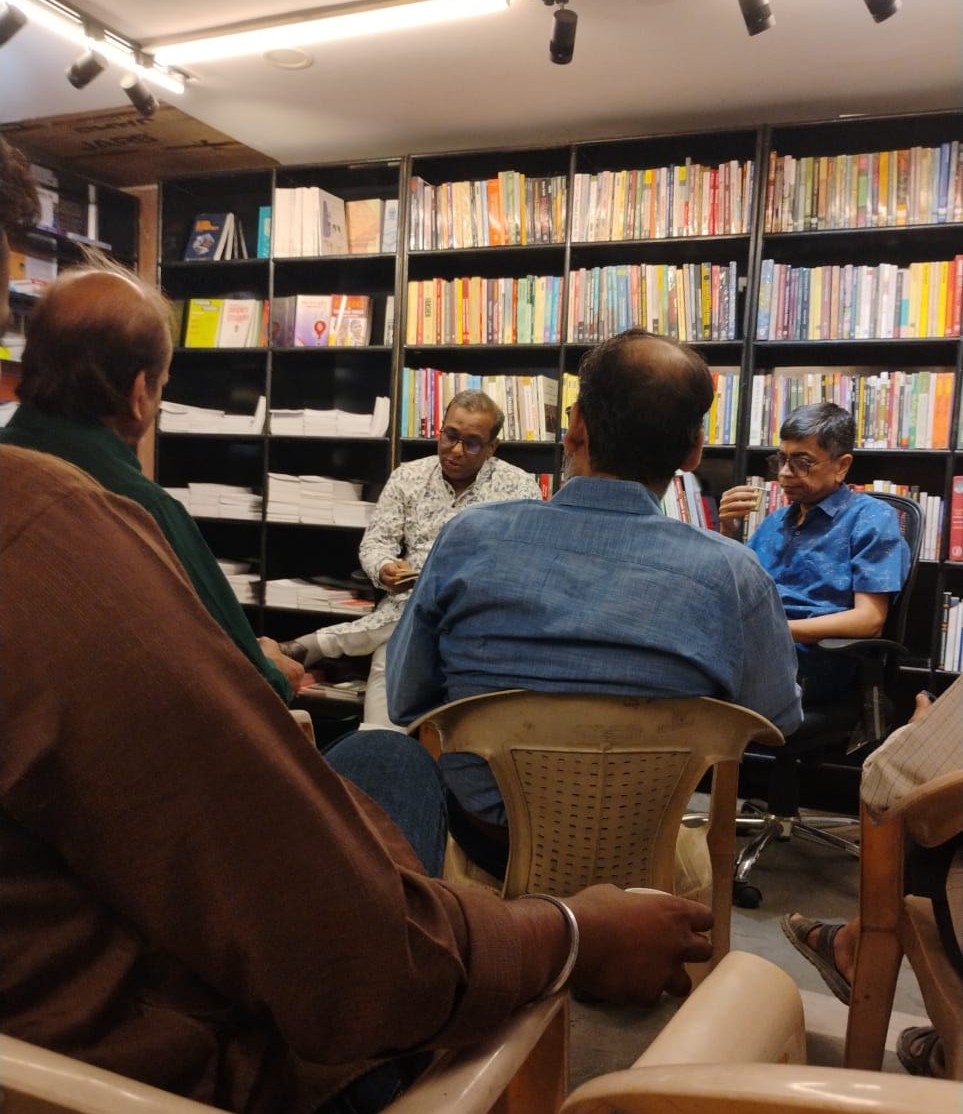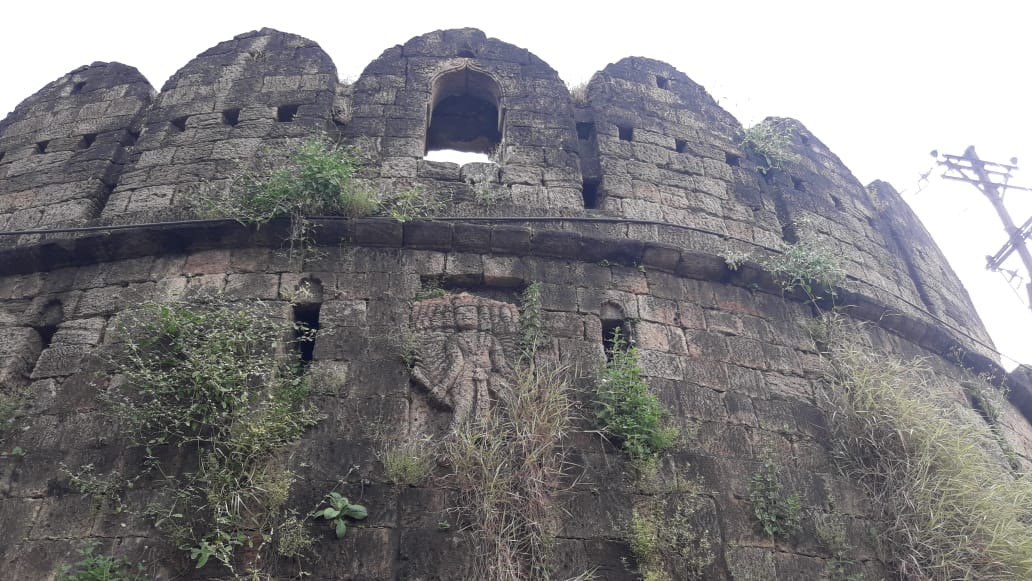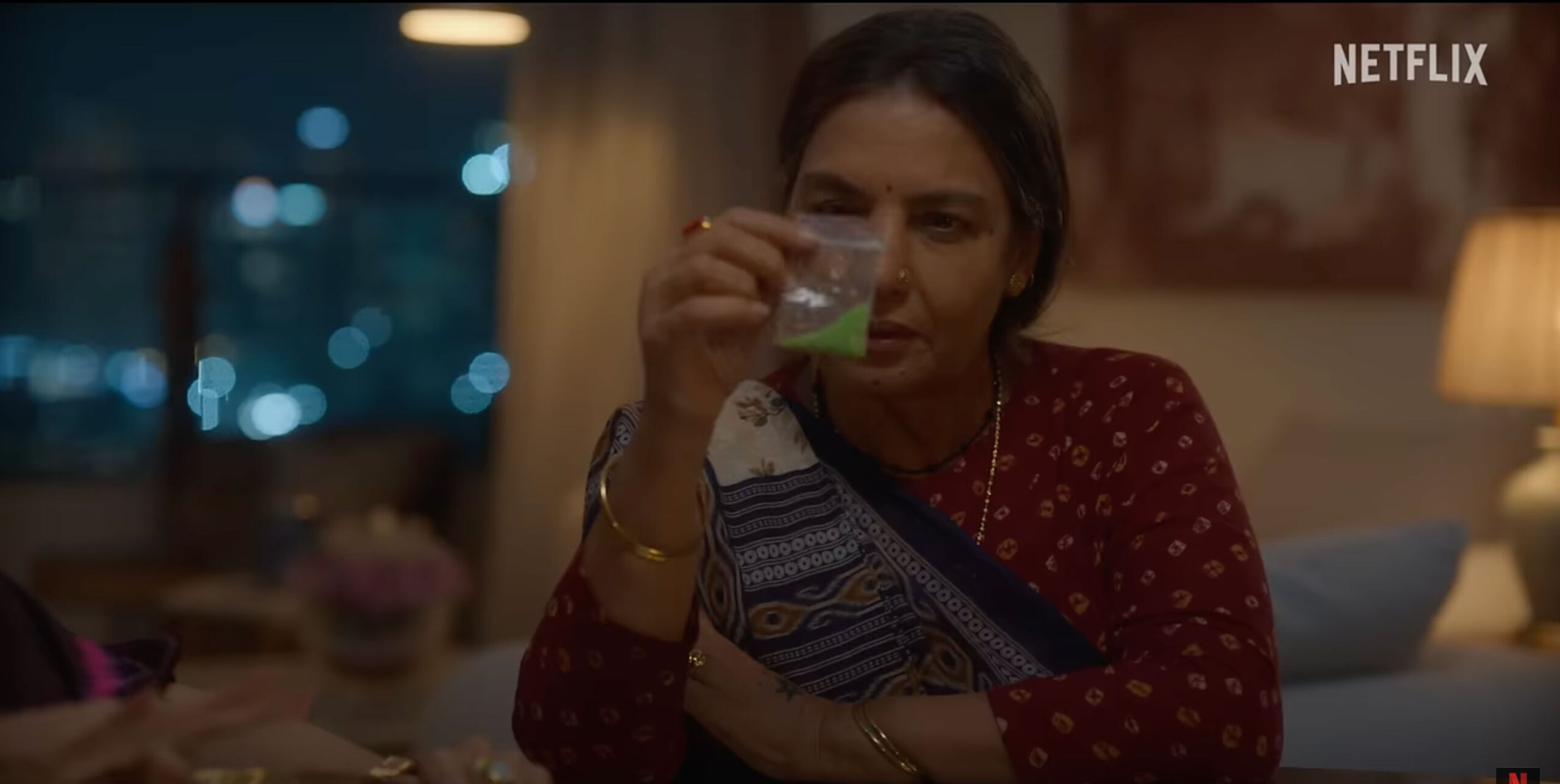I walked into Dhadak 2 with heavy scepticism. Having seen Pariyerum Perumal – the Tamil film directed by Mari Selvaraj – I didn’t expect its Hindi adaptation to do justice to the original. The track record of caste representation in Hindi cinema, particularly in the hands of its predominantly “upper caste” filmmakers, hasn’t exactly been inspiring. So, when Dhadak 2, directed by Shazia Iqbal, finally released on 1 August 2025 [its release originally slated for 22 November 2024 had to postponed when the Central Board of Film Certification (CBFC) recommended 20 cuts], I wasn’t holding my breath. But the film surprised me. It isn’t flawless, and certainly doesn’t reach the raw, poetic mastery of the original — but it dares to wade into a political, cultural and emotional terrain that Hindi cinema has long shied away from.
The film opens with a quote by Thomas Jefferson: When injustice becomes law, resistance becomes duty. The word resistance appears in blue – not just a design choice, but a political signal. This isn’t just a love story. This is a story rooted in caste, politics, protest.
At first glance, the Jefferson quote might seem like a lofty epigraph but in the context of a caste society, it lands with precision. In a social order where systemic oppression is not an aberration but the norm, the very structure of law and custom is steeped in injustice. Here, resistance isn’t simply a moral impulse – it’s a necessary political act. And when the word resistance appears on screen in blue, it’s not just a stylistic flourish. It’s a deliberate invocation of Ambedkarite politics. Blue – the colour of Ambedkar’s movement – signals that this film won’t just follow the tropes of star-crossed lovers. It’s telling you upfront: this is a story about caste, about dissent, and about what it takes to fight a society built to erase you.
The very first aerial shot of the Raja Bhoj statue in Bhopal, which Iqbal includes, sets the historical context of the place where the film is set. But I’m not sure what it means for the plot. Then comes a chilling sequence: a young couple is seen in a room, watching something on a phone, a food delivery man arrives, sees “Jai Bhim” written above the door, and a few liquor bottles lying outside. Moments later, the man murders the boy. This is not just an act of violence. It’s caste terror. The film tells us that this incident happened in Ambedkar Nagar.
Enter Neelesh (played by Siddhant Chaturvedi), riding a bike adorned with Dr Ambedkar’s photo mounted on a blue Ashoka Chakra. He’s from Bhim Nagar, and part of a local music group called “Bhim Baja Dhol Boyz” (BBDB). The film’s female lead, Vidhi (Tripti Dimri), is impressed by their drumming and books them in advance for her sister’s wedding. That’s when the title appears on screen: Dhadak 2, with the ‘2’ in blue. The colour blue isn’t just present in Dhadak 2 — it’s central. It runs through the film like a thread of assertion, resistance and identity. Take the protagonist’s name: Neelesh. It literally means “the blue one,” a nod not just to colour, but to legacy – the blue flag, the blue book, the blue suit of Ambedkar. In contrast, the female lead is named Vidhi, a word that connotes law, rules, and societal codes – the vidhi-vidhan rooted in Manusmriti and caste hierarchy. Their names alone stage the tension: resistance versus order, Ambedkar versus Manu. Then there’s Shekhar, the Ambedkarite student leader whose journey echoes Rohith Vemula’s life and institutional murder. While his character arc draws from Vemula, his name recalls Chandra Shekhar Azad – the fiery Dalit youth leader and sitting MP from Uttar Pradesh. None of this feels accidental. These names, these colours, these allusions — they work like quiet footnotes stitched into the narrative, aligning the personal with the political, and the love story with a history of struggle.
Neelesh applies to a law college where the principal, Haider Ansari, comes from a Pasmanda Muslim background. The office displays portraits of Ambedkar, Jotiba Phule, and Savitribai Phule. When Ansari reads Neelesh’s full name – Neelesh Ahirwar – he quickly tags him as “quota”. Even after acknowledging Neelesh’s impressive marks, he warns: “You won’t be able to cheat here”. This moment echoes a key scene from Pariyerum Perumal, where the principal asks Pariyan what he wants to become, and he says, “Doctor”. When told, “This is a law college, not a medical one,” he responds, “I want to become a doctor like Ambedkar.” That emotional tether to Ambedkar’s legacy feels muted in the Hindi remake.
As protests erupt on campus demanding fellowship rights, protestors chant slogans with blue scarves wrapped around their necks. Shekhar says, “It’s not that fellowship causes casteism, it’s casteism that made fellowships necessary.” But Neelesh distances himself from this, focused entirely on his dream of becoming a lawyer.
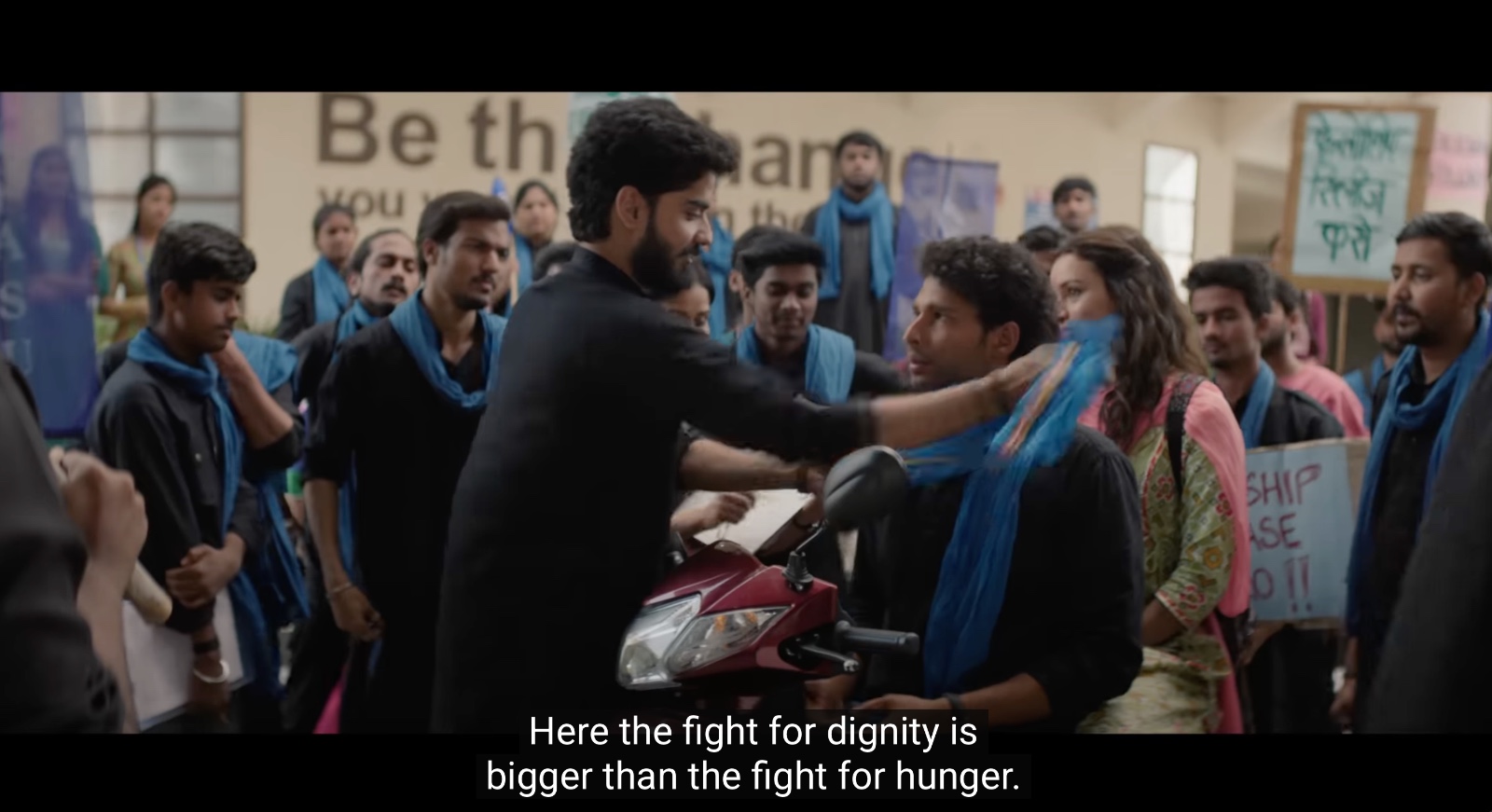
In a particularly biting classroom scene, students introduce themselves with “upper caste” surnames. When Neelesh avoids saying his last name/surname, the professor presses him. He replies, “Neelesh BA LLB”, prompting laughter. It’s humiliating and deeply real. Shekhar offers Neelesh some moral support, greeting him with a quiet but affirming “Jai Bhim”.
The film captures the politics of food, wedding rituals (involving sub-castes in Brahmins), and spatial caste segregation with subtlety. The college is big, but so is the strength of resistance within it. It reflects the increasing presence of Bahujan students in institutions of higher education – many of them first-generation learners. There’s a culture of debate, of questioning. It’s not just about access to education, but about claiming space, asserting voice, and reshaping what these spaces stand for. Shekhar makes a sharp point during a debate: “There’s a centuries-old backlog of discrimination. Seventy years of reservation won’t undo it’.
The protesting students hold placards that read ‘Bahujan Lives Matter’. They’re protesting for fellowships and a range of issues affecting Bahujan students in education. Within this protesting environment Neelesh tells Shekhar, “I’ve come to study, not to fight.” Shekhar replies, “Look at this pen – the small cap is just a tiny part of it. The rest of it is us, yet it’s sitting on our heads.”
This is the exact metaphor Kanshi Ram used to educate and awaken the masses about their own power. It illustrates how the majority – the Bahujan (the Dalit, Adivasi, OBC and converted religious minorities) – forms the substance, but control remains with a small minority. This simple image makes clear the imbalance of power and resources, urging people to recognize their strength and demand fairer distribution.
In many ways, Dhadak 2 is unlike any previous Hindi film tackling caste, love, and violence. It checks all the boxes of political correctness, but more than that, it engages with lived realities. It includes a discussion about toxic masculinity, too: Vidhi breaks up with her boyfriend over his controlling behaviour and later reassures her new boyfriend Neelesh that he’s not like that. But is this really just a way for the director to show Neelesh – a Dalit boy – receiving affirmation from an “upper caste” girl? It feels out of place in the plot.
The serial killer from the opening sequence returns – a caste-killer who targets inter-caste couples. He is, symbolically and literally, the enforcer of Vidhi – caste order – often abetted by “upper caste” families.
Compared to Pariyerum Perumal, Dhadak 2 lacks some of the original’s poetic texture. The music doesn’t land. The metaphors, beats and raw cinematic aesthetic are diluted. Neelesh shows Vidhi the caste-based geography of their city, explaining how his family makes drums and works with leather, while hers enjoys professions protected by caste privilege. He urges her to wake up from the dream she’s in – a dream of caste-blind love.
“Does caste difference mean we can’t be together?” Vidhi asks. It’s both innocent and heart-wrenching.
But one aspect in Dhadak 2 demands serious scrutiny. Siddhant Chaturvedi, fair-skinned in real life, has been darkened with makeup to “look” Dalit. This choice isn’t just superficial – it’s loaded. By reducing caste to skin tone, the film leans into a tired and troubling stereotype: that Dalitness is somehow marked by melanin. It flattens a complex, structural identity into a cosmetic detail. Do filmmakers really believe caste is visible only through complexion? Or that makeup can stand in for the lived reality of systemic exclusion? This isn’t just lazy – it reveals how deeply ingrained caste biases still are, even among those attempting to critique the system. For a film so politically self-aware in parts, this choice rings hollow.
Then there’s the bigger question: how will the Hindi-speaking audience, particularly from the so-called Hindi heartland, receive this film? Dhadak 2 may be marketed like a masala romance, but it’s anything but. Those expecting song-and-dance escapism are instead met with a raw, unflinching indictment of caste violence and everyday Savarna entitlement. For many – especially the “upper caste” audience – this isn’t just unfamiliar territory; it can be deeply unsettling. Already, there’s visible discomfort and disappointment spilling onto social media, where some have admitted to feeling “betrayed” by what they assumed would be a breezy love story. The truth is, caste-disruptive narratives are not part of the Hindi mainstream’s cinematic diet – and for many, Dhadak 2 will feel less like a film and more like an indictment. Which, frankly, it is. That’s what makes its presence in the commercial space so radical – and, for some, unbearable.
While watching Dhadak 2, I couldn’t help but be reminded of Prakash Jha’s Aarakshan (2011) — particularly in its college setting and the heated debates around reservation. But the resemblance ends there. The intention, gaze and political force behind Dhadak 2 are vastly different. Aarakshan approached the subject from a more neutral, often sanitized lens – careful not to ruffle too many feathers. In contrast, Dhadak 2 isn’t interested in balance or appeasement. It doesn’t tiptoe. It confronts. Its anger is earned, its politics unapologetic. Where Aarakshan skimmed the surface of caste inequality, Dhadak 2 dives into its violent depth – with names, with histories, with consequences.
One of the film’s powerful scenes unfolds quietly in the principal’s office. Neelesh’s father, a folk dancer, arrives to request the revocation of his son’s college restriction. The principal, from a Pasmanda background himself, shares his own past as a weaver and offers Neelesh a line that lingers: “If given a choice between dying and fighting, choose to fight.” It’s a moment of intergenerational solidarity – Bahujan to Bahujan – a rare, intimate moment of empathy within an oppressive system.
But outside the office, reality slaps back. Neelesh’s father is mocked and publicly humiliated. His clothes are torn by “upper caste” students, a brutal reminder that no amount of talent, art, or pleading can shield Dalitbahujan bodies from casteist violence. Later, Vidhi’s father, reacting to his nephew’s expulsion from college, voices the “upper caste” paranoia that’s so common it barely needs translation: “If the boy files an SC/ST case, we’ll rot in jail.” The fear isn’t of being harmed – it’s of being held accountable. And in that moment, the film captures the Savarna fear of Ambedkarite assertion with devastating clarity.
The film attempts to recreate the events of Rohith Vemula’s life – Shekhar, who fights for his fellowship, stages a protest, and ultimately takes his own life due to administrative negligence. To depict Rohith Vemula’s institutional murder on the screen of Hindi popular cinema is no small thing. It’s a bold move.
But this inclusion ends up diverting the film from its original narrative and a contradiction becomes hard to ignore. The principal comes from a Pasmanda community and holds Ambedkarite values – his interactions with Neelesh convey the latter. However, Shekhar’s protest – which unfolds not in the margins but in the heart of the college, with many others involved – somehow escapes his attention. It’s difficult to reconcile how someone so ideologically aligned could be so absent, so passive, especially in the face of an ongoing protest. The two threads don’t sit well together – they clash.
The film’s ending clearly tries to mirror Pariyerum Perumal. Here, the dog isn’t blue – but it appears as a projection in Nilesh’s mind, pulling him back into consciousness. He escapes from the railway tracks where he was left to die, and he fights back. What stands out is that he doesn’t just survive – he speaks up. Standing outside Vidhi’s home, in front of the entire neighbourhood, he doesn’t beg or plead. He testifies. It’s a rupture from the codes of silence expected of people like him. His monologue is not just cathartic – it’s revolutionary.
Sir, I was born in a village where the roads weren’t ours, nor the land, nor the water, not even our lives. When we came to the city, we thought things would change. Nothing did. The roads are wider here, buildings taller, but the minds are still narrow. I thought I could change things with education. I worked hard, got into college, dreamt of being a lawyer. I started flying. But you took away my sky. I now understand – it’s not about money, it’s about power.
This is the heart of the film. A refusal to stay invisible. A refusal to die quietly. Neelesh doesn’t just survive caste violence – he names it. He refuses to carry a shame that was never his. And in that moment, the film moves from being about resistance to being an act of resistance itself.
And then comes a small gesture with huge weight. During the final exam, Neelesh’s pen stops working. Vidhi’s brother notices and silently hands him a pen. A small crack in the fortress of caste. A change of heart.
Dhadak 2 isn’t perfect. The film’s music lacks the punch that Pariyerum Perumal’s had. Every beat, every lyric, and the visual, cinematic metaphors that defined that film are completely missing here. If we compare it to Pariyerum Perumal, it may seem lacking on several fronts, and that’s understandable – Pariyerum Perumal is a masterpiece rooted in Tamil society, which has a distinct anti-caste history although the Backward Castes are still struggling to accept Dalits as equals. The Hindi society lags far behind in this respect. That said, better late than never. Dhadak 2 signals a welcome change. Producer Karan Johar and the Hindi film industry have been forced to sit up and take notice of the decades-long Ambedkarite movement across India and the anti-caste filmmakers in the South.
Forward Press also publishes books on Bahujan issues. Forward Press Books sheds light on the widespread problems as well as the finer aspects of Bahujan (Dalit, OBC, Adivasi, Nomadic, Pasmanda) society, culture, literature and politics. Contact us for a list of FP Books’ titles and to order. Mobile: +917827427311, Email: info@forwardmagazine.in)
